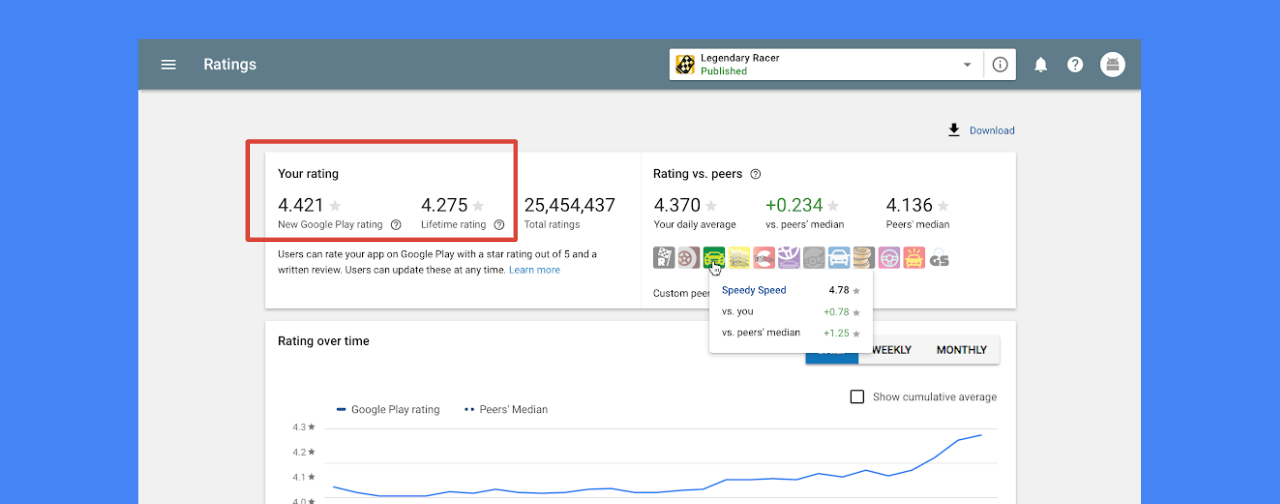Improved app quality and discovery on Google Play
Posted by Kosuke Suzuki, Product Manager, Google Play
Every month, more than 2 billion users from over 190 countries visit the Google Play Store to browse and discover new apps and games. As part of making Google Play a great discovery experience, we continue to increase our focus on quality. Over the coming weeks, we’ll be updating our featuring and ranking logic to further prioritize high quality apps and games with strong technical performance and engaging content.
If you’re looking for ways to improve your app quality, below are three key areas to focus on. Along with these suggestions, we've highlighted several tools available in the Google Play Console to help you better understand user behavior, monitor technical performance, and deliver the best in-app experience for users. Remember, app quality will impact where and how prominently you're eligible to surface in the store, so always look to create the most compelling and delightful experience possible.
Good in-app user experience
Have you thought about your UI and if your app has intuitive navigation, controls, and menu access? Do you have a good first-time-user experience, overall polished design, and enough content to keep users engaged for the long term?
Quality guidelines: meet user expectations and maximize your exposure opportunities by testing against the quality guidelines for different platforms.
Testing tracks: release early versions of your app to gather early user feedback and make improvements before full release.
Engaging content: build loyalty and sustainable app engagement by satisfying your users needs
Ad placement: for apps with ads integrated, ensure a good user experience by choosing the right ad format and placement throughout your app.
Strong app stability and technical performance
Have you considered whether your app has good overall technical performance, and if it is power-thrifty, responsive, efficient, and well-behaved? 42% of users who leave a 1-star review mention stability or bugs.
Android vitals: review the Android vitals dashboard to see how your app is performing on core vitals metrics including crash rate, ANR rate, excessive wakeups, and stuck partial wake locks in the background. Look at developer selected peer benchmarks to see how you measure up to others in your category. Exhibiting bad behavior in Android vitals will negatively affect the user experience in your app and could limit your exposure opportunities on Google Play.
Pre-launch reports: identify where your app has problems to ensure you’re presenting the highest possible quality to users upon launch. The pre-launch reports use automated tests on real devices that can identify layout issues, provide crash diagnostics, locate security vulnerabilities, and more.
Effective store listing page
Last but not least, a quality app also means having an effective and accurate listing page. Does your store listing page make a great first impression? Does it clearly and accurately communicate the value and intended use cases of your app?
Best practices: use strong creative assets, including your app title, icon, screenshots and video, along with a clear and informative app description, that provide an accurate representation of your app. To improve discovery opportunities, we suggest all pages have a video (set to public or unlisted and non-monetized) to inform users about your app, and for game developers to provide three or more 16:9 aspect ratio screenshots.
New icon specification: create a more polished experience on the store by updating your icon before June 24th.
Ratings and reviews: monitor your user ratings and reviews and respond to negative reviews where possible. When receiving a reply from developers, users increase their rating by +0.7 stars on average. Paying attention to ratings and reviews will be increasingly important as we rollout the new rating score in August 2019. This will place more weight on your most recent ratings in the Google Play Store.
Store listing experiments: A/B test different versions of your listing page amongst actual Google Play users. Make sure to test each component independently and run tests for at least a week in order to gather significant results.
Custom store listings: tailor your marketing messages to specific user groups based on their country, install state or even pre-registration. This is a great way to highlight key features and updates best suited for existing or lapsed users.
Localization: take advantage of Google Play’s worldwide reach to identify key markets, translate your app store listing, and even run store listing experiments to optimize for each country.
Get the most out of the Google Play Console and learn about improving app quality on the Academy for App Success, a free e-learning resource.
How useful did you find this blog post?





Komentar
Posting Komentar